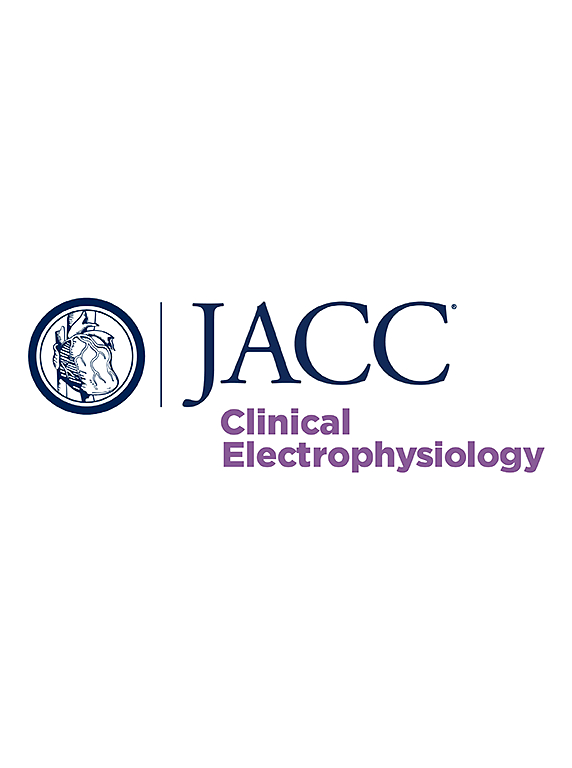The Efficacy of Left Atrial vs Biatrial Cardioneuroablation in Patients With Vasovagal Syncope
IF 8
1区 医学
Q1 CARDIAC & CARDIOVASCULAR SYSTEMS
引用次数: 0
Abstract
Background
Cardioneuroablation has been proposed to be effective in patients with vasovagal syncope, whereas the preferred ablation strategy is undetermined.
Objectives
This study aimed to determine the preferred ablation strategy of cardioneuroablation between the left atrial (LA) and the bilateral atrial (BiA) approach.
Methods
This study was a prospective randomized clinical trial to compare the efficacy of 2 ablation strategies for patients with vasovagal syncope. The participants were randomly assigned to either the LA or BiA ganglion plexus ablation group in a 1:1 ratio.
Results
Eighty participants (37 men [46.2%]; age 38 ±16 years) were enrolled, with 40 participants in each group. The efficacy was 87.5% in the LA group (95% CI: 76.8 to 98.2%) and 90% (95% CI: 80.7 to 99.7%) in the BiA group (P = 0.723; P for noninferiority = 0.001). Compared to the BiA group, LA group reduced the average procedure time by 13 minutes (95% CI: 6-20 minutes), the average x-ray dosage by 5.7 mGy (95% CI: 2.1-9.3 mGy), the average ablation lesions by 4 (95% CI: 2-6), and ablation time by 125 seconds (95% CI: 60-190 seconds). No significant difference was observed in presyncope recurrence rate (15% vs 10%; P = 0.498), quality of life (78.7 ± 13.6 vs 80.9 ± 10.6; P = 0.417), mean heart rate (79 ± 11 vs 77 ± 9; P = 0.391), and response to head-up tilt test (57.1% vs 62.2%; P = 0.664) between groups at 12 months.
Conclusions
The LA approach's efficacy was noninferior to the BiA approach, whereas the LA approach showed the added benefit of reduced procedure time, a smaller ablation lesion, and smaller x-ray dosage. (Different Catheter Ablation Strategy in Vasovagal Syncope; NCT05573178)
左房与双房神经消融治疗血管迷走神经性晕厥的疗效:一项随机临床试验。
背景:心血管消融术已被认为对血管迷走神经性晕厥患者有效,而首选的消融术策略尚未确定。目的:本研究旨在确定左心房(LA)和双侧心房(BiA)入路之间首选的心神经消融策略。方法:本研究是一项前瞻性随机临床试验,比较两种消融术治疗血管迷走神经性晕厥的疗效。参与者按1:1的比例随机分配到LA或BiA神经节丛消融组。结果:80例受试者(男性37例,46.2%);年龄38±16岁),每组40例。LA组疗效为87.5% (95% CI: 76.8 ~ 98.2%), BiA组疗效为90% (95% CI: 80.7 ~ 99.7%) (P = 0.723;P表示非劣效性= 0.001)。与BiA组相比,LA组平均手术时间缩短了13分钟(95% CI: 6-20分钟),平均x线剂量减少了5.7 mGy (95% CI: 2.1-9.3 mGy),平均消融病灶减少了4个(95% CI: 2-6),消融时间缩短了125秒(95% CI: 60-190秒)。两组在晕厥前复发率上无显著差异(15% vs 10%;P = 0.498),生活质量(78.7±13.6 vs 80.9±10.6;P = 0.417),平均心率(79±11 vs 77±9;P = 0.391),平视倾斜试验反应(57.1% vs 62.2%;P = 0.664)。结论:LA入路的疗效不逊于BiA入路,而LA入路具有缩短手术时间、更小的消融病灶和更小的x线剂量的额外好处。导管消融治疗血管迷走神经性晕厥的不同策略NCT05573178)。
本文章由计算机程序翻译,如有差异,请以英文原文为准。
求助全文
约1分钟内获得全文
求助全文
来源期刊

JACC. Clinical electrophysiology
CARDIAC & CARDIOVASCULAR SYSTEMS-
CiteScore
10.30
自引率
5.70%
发文量
250
期刊介绍:
JACC: Clinical Electrophysiology is one of a family of specialist journals launched by the renowned Journal of the American College of Cardiology (JACC). It encompasses all aspects of the epidemiology, pathogenesis, diagnosis and treatment of cardiac arrhythmias. Submissions of original research and state-of-the-art reviews from cardiology, cardiovascular surgery, neurology, outcomes research, and related fields are encouraged. Experimental and preclinical work that directly relates to diagnostic or therapeutic interventions are also encouraged. In general, case reports will not be considered for publication.
 求助内容:
求助内容: 应助结果提醒方式:
应助结果提醒方式:


